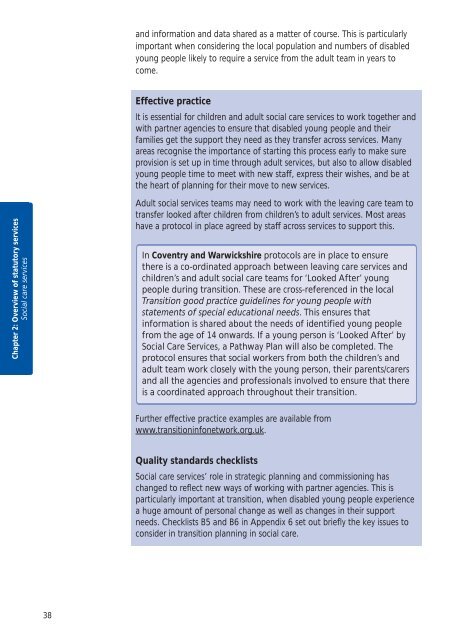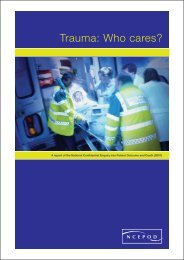A Transition Guide for All Services - Transition Information Network
A Transition Guide for All Services - Transition Information Network
A Transition Guide for All Services - Transition Information Network
- No tags were found...
You also want an ePaper? Increase the reach of your titles
YUMPU automatically turns print PDFs into web optimized ePapers that Google loves.
and in<strong>for</strong>mation and data shared as a matter of course. This is particularlyimportant when considering the local population and numbers of disabledyoung people likely to require a service from the adult team in years tocome.Effective practiceIt is essential <strong>for</strong> children and adult social care services to work together andwith partner agencies to ensure that disabled young people and theirfamilies get the support they need as they transfer across services. Manyareas recognise the importance of starting this process early to make sureprovision is set up in time through adult services, but also to allow disabledyoung people time to meet with new staff, express their wishes, and be atthe heart of planning <strong>for</strong> their move to new services.Chapter 2: Overview of statutory servicesSocial care servicesAdult social services teams may need to work with the leaving care team totransfer looked after children from children’s to adult services. Most areashave a protocol in place agreed by staff across services to support this.In Coventry and Warwickshire protocols are in place to ensurethere is a co-ordinated approach between leaving care services andchildren’s and adult social care teams <strong>for</strong> ‘Looked After’ youngpeople during transition. These are cross-referenced in the local<strong>Transition</strong> good practice guidelines <strong>for</strong> young people withstatements of special educational needs. This ensures thatin<strong>for</strong>mation is shared about the needs of identified young peoplefrom the age of 14 onwards. If a young person is ‘Looked After’ bySocial Care <strong>Services</strong>, a Pathway Plan will also be completed. Theprotocol ensures that social workers from both the children’s andadult team work closely with the young person, their parents/carersand all the agencies and professionals involved to ensure that thereis a coordinated approach throughout their transition.Further effective practice examples are available fromwww.transitioninfonetwork.org.uk.Quality standards checklistsSocial care services’ role in strategic planning and commissioning haschanged to reflect new ways of working with partner agencies. This isparticularly important at transition, when disabled young people experiencea huge amount of personal change as well as changes in their supportneeds. Checklists B5 and B6 in Appendix 6 set out briefly the key issues toconsider in transition planning in social care.38
















